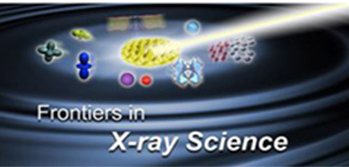Abstracts - Max Planck Symposium on Frontiers in X-ray Science 2012
Abstracts
Crystallographic refinement of collective excitations using standing wave inelastic X-ray scattering
Peter Abbamonte
Department of Physics, University of Illinois at Urbana-Champaign, USA

Abstract:
In this talk I will propose a qualitatively new approach to x-ray scattering that allows true, real-space refinement of the dynamics of collective excitations in periodic systems, with simultaneous angstrom spatial resolution and attosecond time resolution. This method, which combines inelastic x-ray scattering and standing wave techniques, can be thought of as a generalization of x-ray crystallography that allows refinement of the collective excitations of a material, rather than just its ground state.

Elastic and inelastic resonant soft x-ray scattering meet at the frontier
Giacomo Ghiringhelli
Dipartimento di Fisica, Politecnico di Milano, Italy
Abstract
Resonant scattering of x rays at the L3 edge of 3d transition metals in strongly correlated systems brings element specific information on the real space (elastic) and energy (inelastic) order. Recent results on YBa2Cu3O6+delta demonstrate that the the two classes of experiment are converging: the elastic component can sometimes be better determined and understood by using an inelastic scattering experiental set-up.

Ultrahigh pressures and radiative shocks in inertial confinement fusion experiments on the National Ignition Facility*
Siegfried H. Glenzer
Lawrence Livermore National Laboratory, P.O. Box 808, Livermore, CA 94551, USA
Abstract
With completion of the National Ignition Facility (NIF) at the Lawrence Livermore National Laboratory the quest for producing a burning fusion plasma has begun. The goal of these experiments is to compress matter to densities and temperatures higher than the interior of the sun to initiate nuclear fusion and burn of hydrogen isotopes. The first inertial confinement fusion implosion experiments with cryogenic fuel layers have recently been fielded [1]. These experiments use mega joule laser energies that compress fusion capsules in indirect dive hohlraums to test initial hot spot formation and thermonuclear fuel assembly. We applied 0.17 mg of equimolar deuterium-tritium thermonuclear fuel with the potential for ignition and significant fusion yield conditions. Measurements of the implosion core, neutron yield, temperatures and fuel areal density show compression by a factor of 30 to a fuel density approaching 1000 g/cc and hot spot temperature of 3.5 keV. This achievement is the result of the first hohlraum and capsule tuning experiments where the stagnation pressures have been systematically increased by more than a factor of 10 by fielding low-entropy implosions through the control of radiation symmetry, small hot electron production, and proper shock timing. Current implosions demonstrate ultrahigh pressures of more than 100 Gbar that drive fusion processes and supernovae-like radiative shock waves into the surrounding plasma. A Lawson-type fusion confinement parameter of 10 atm s has been achieved where the comparison with radiation-hydrodynamic simulations indicates that these implosions are within a factor of three required for reaching ignition and high yield. In this talk we will discuss recent findings indicating the path towards further pressure increases in the near future.
*This work performed under the auspices of the U.S. Department of Energy by Lawrence Livermore National Laboratory under Contract DE-AC52-07NA27344.
[1] S. H. Glenzer, B. K. Spears, M. J. Edwards et al., “First implosion experiments with cryogenic thermonuclear fuel on the National Ignition Facility“, Plasma Physics and Controlled Fusion 54, 045013 (2012).
[2] S. H. Glenzer, D. A. Callahan, A. J. MacKinnon et al., “Cryogenic thermonuclear fuel implosions on the National Ignition Facility“, Physics of Plasmas 19, 056318 (2012).

Picture of the 6 keV x-ray emission at t = 400 ps after peak compression of the spherical implosion showing that a radiative shock wave is driven into the surrounding plasma reaching shock velocities of 450 km/s with a light curve similar to supernovae observations.

Astrophysics using free electron lasers: from the laboratory to stars and planets
Gianluca Gregori
Clarendon Laboratory, Department of Physics, Oxford University, GB
Abstract:
We discuss how current generation of high power lasers and FELs can be used to simulate planetary conditions and beyond. We show examples to the carbon equation of state, as well as planned use of FEL facilities to look at the large scale magnetization of the Universe and the Hawking-Unhruh effect near the event horizon of black holes.

Fundamental Dynamics in Molecules, Clusters, and Interfacial Systems studied with Novel XUV and X-ray Light Sources
Oliver Gessner
Ultrafast X-ray Science Laboratory, Chemical Sciences Division, Lawrence Berkeley National Laboratory
Abstract:
The potential of ultrafast x-ray light sources to unravel fundamental electronic and nuclear dynamics in molecules, clusters, and interfacial systems is discussed. Showcase examples of ongoing projects are the study of charge-transfer dynamics in dye-sensitized nanocrystals and single-shot coherent diffractive imaging of dynamics in superfluid helium nanodroplets.


Ultrafast Charge and Energy Flow during Molecular Dynamics
Albert Stolow
Molecular Photonics, National Research Council Canada and Department of Physics, University of Ottawa, Ontario, Canada
